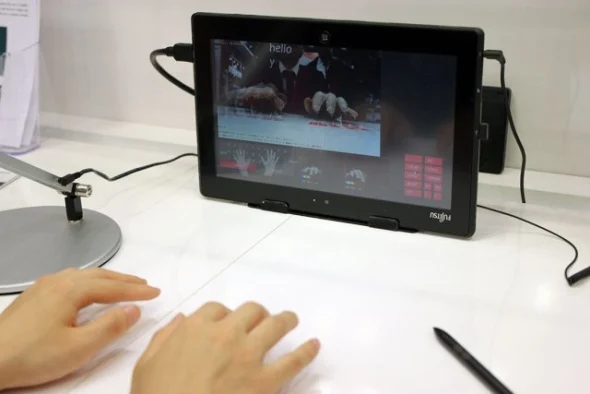Fujitsu recently showcased a prototype virtual tablet keyboard that could eventually replace external and on-screen ‘boards.
The problem with most on-screen table keyboards? The keys are quite small – making it difficult for people with large fingers or less than perfect coordination to consistently hit the right buttons.

The other problem? If half your screen is taken up with a virtual keyboard, it leaves significantly less space for you to see what you’re doing.
However, as noted above, Fujitsu’s virtual keyboard allows users to type without having to put fingers on the screen. How does it work? The user simply props the tablet up, with the tablet camera tracking and processing hand (typing) movements.
It should probably be noted that this isn’t like some of the other virtual keyboards which have turned up over the years with a red laser outlined keyboard on a desktop. Rather, the Fujitsu system appears to treat wherever a user places their fingers as the home row – meaning you move your fingers as you would when touch typing on a physical keyboard.
The problem I see with this system is that if you aren’t a touch typist, the hunt and peck style will be exceptionally difficult when there are no keys to hunt.
Fujitsu is still in the process of tweaking the system, so it’s possible that in future versions there will be some sort of laser projector to shoot a keyboard on the surface or possibly a piece of plastic with keys printed on them that you can use to align your fingers. Considering that many devices are implementing cameras that are able to sense motion, this technology doesn’t seem unrealistic in the least. As such, this tech is likely to become quite common over the next few years.






